Apple unveils M1 Ultra, Mac Studio, 5G iPhone SE and a new iPad Air
The tech giant unveiled a host of new hardware during its “Peek Performance” event on 8 March
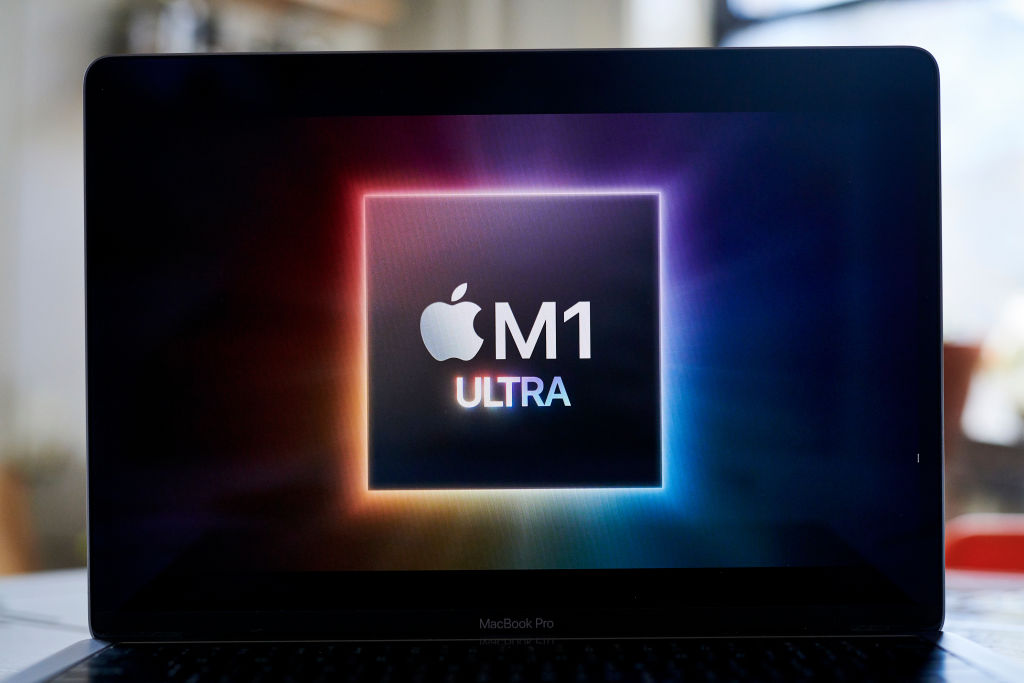

Apple unveiled a host of new hardware during its “Peek Performance” event on Tuesday, including the M1 Ultra system on chip (SoC), the Mac Studio desktop, and brand new versions of the iPhone SE and iPad Air.
Additionally, the Cupertino-based tech giant also uncovered a new, forest green shade for its flagship iPhone 13, with a more muted, alpine green version for the iPhone 13 Pro.
However, it was the M1 Ultra chip that took centre stage during Tuesday’s event, with analysts hailing it as giving the company an “inherent advantage” over its competitors.
M1 Ultra
The fourth iteration of Apple’s flagship M1 chip promises to be “the world’s most powerful chip for a personal computer” and forms the basis of the company's new Mac Studio desktop PC.
However, the M1 Ultra was actually expected to arrive as the M2, with Bloomberg reporter Mark Gurman incorrectly predicting that the new chip would retain the same eight-core architecture as the M1.
Instead, the M1 Ultra comes with a 64-core GPU that is eight times the size of the original M1, as well as 128GB of high-bandwidth and low-latency unified memory and a 20-core CPU with 16 high-performance cores and four high-efficiency cores. According to Apple, the Arm-based chip also consumes 200 fewer watts of power than the highest-end PC GPU available.
Apple’s SVP of Hardware Technologies, Johny Srouji, said that the M1 Ultra “will shock the PC industry”.
Get the ITPro daily newsletter
Sign up today and you will receive a free copy of our Future Focus 2025 report - the leading guidance on AI, cybersecurity and other IT challenges as per 700+ senior executives
“By connecting two M1 Max die with our UltraFusion packaging architecture, we’re able to scale Apple silicon to unprecedented new heights," he said. "With its powerful CPU, massive GPU, incredible Neural Engine, ProRes hardware acceleration, and huge amount of unified memory, M1 Ultra completes the M1 family as the world’s most powerful and capable chip for a personal computer."
Technology analyst Paolo Pescatore of PP Foresight said that the “M1 family of chips is transforming its products, form factors and capabilities far beyond what users can do today”.
“We are now seeing Apple flex its muscles by leveraging the fruits of its own silicon across its portfolio,” he told IT Pro.
Meanwhile, Forrester VP and principal analyst Julie Ask described Apple’s silicon as the source of the company's “inherent advantage in performance such as speed, latency, and on-device features”, which include facial recognition and natural language processing (NLP).
“Their silicon strategy also allows them to deliver power-efficient devices with slim form factors. Fundamentally, designing and owning their chipsets will give them long-lasting advantages for performance, power-efficiency and cost,” she added.
Mac Studio
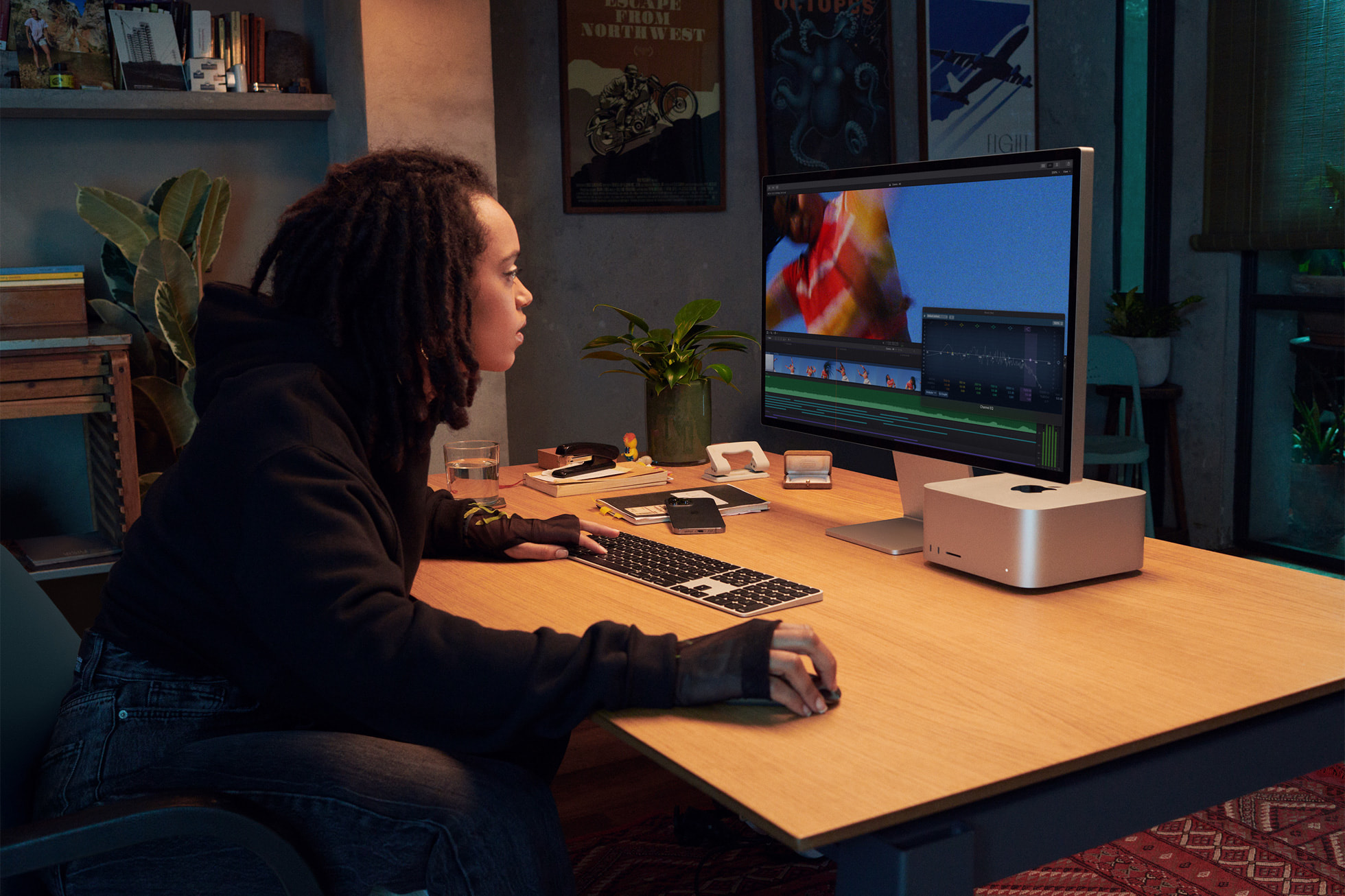
The M1 Ultra-powered Mac Studio and 27-inch Studio Display are Apple’s latest desktop offerings tailored to creative professionals with demanding workloads.
It was designed with app developers in mind, allowing them to quickly build new versions of code as well as run more automated integration and testing than ever before.
With a 27-inch 5K retina screen, the Studio Display comes with True Tone technology that delivers a more natural colour palette, enabled by a P3 gamut and 14.7 million pixels, while no detail will be lost within the 600 nits of brightness.
Pescatore described the Mac Studio and Studio Display as a device that will completely redesign users’ desktop experience.
The Mac Studio and Studio Display are available to order starting today, and will start arriving to customers on 18 March.
iPhone SE
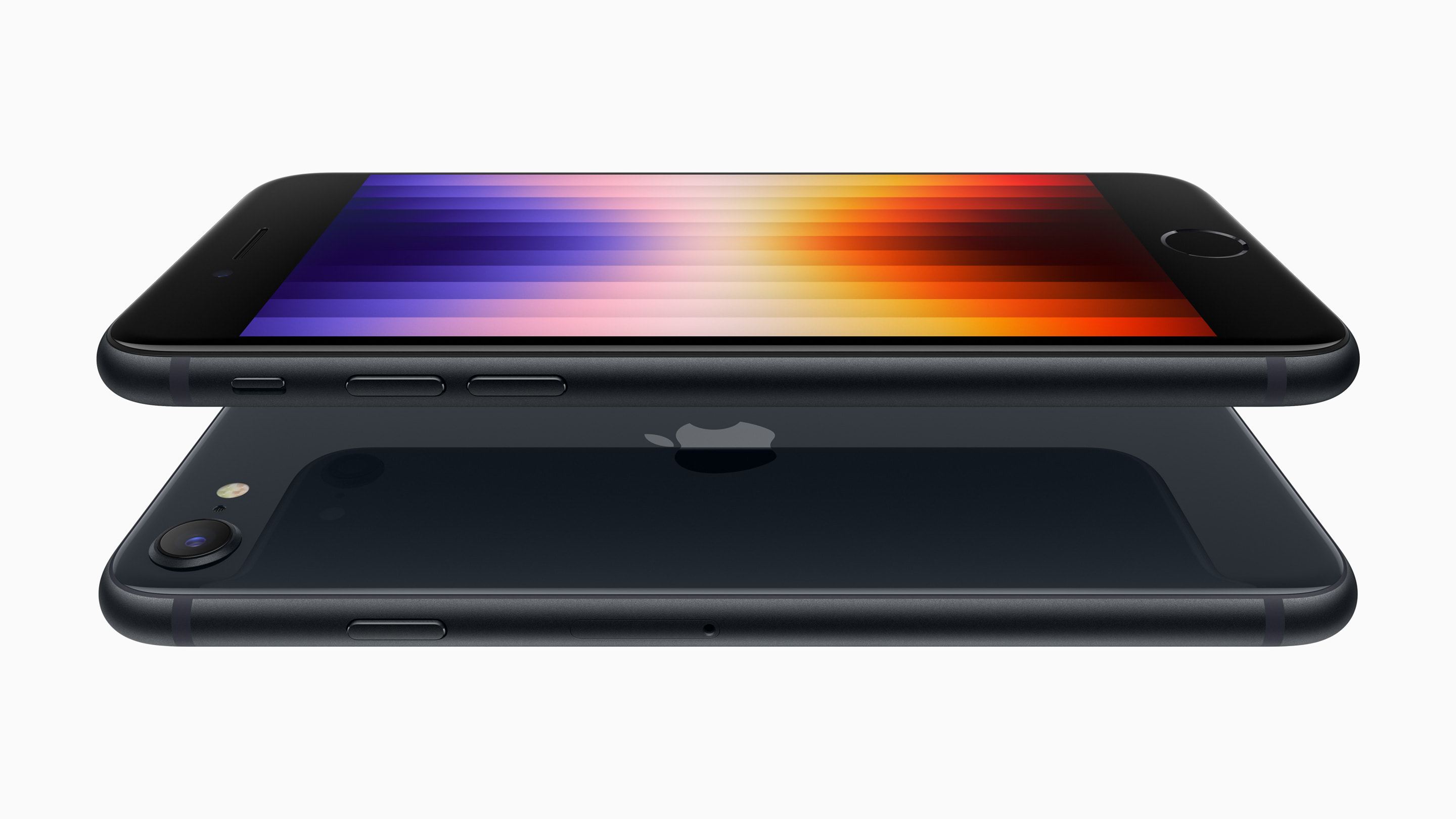
The new, budget iteration of Apple’s flagship smartphone is now equipped with 5G, a longer battery life, as well as improved durability that will protect the handset from spills and dust.
RELATED RESOURCE

The innovator’s shift to composable ERP
How to modernise with as little risk as possible
The iPhone SE is powered by Apple’s A15 Bionic chip – the same 5nm unit that forms the basis of the iPhone 13 unveiled in September 2021. However, it’s expected to be less than half the cost of the flagship iPhone, with a starting price of $429 (£325.80).
Pescatore said that the price tag “will appeal to cost-conscious users at a time when household bills are all increasing”, describing the iPhone SE as a “key smartphone for telcos that helps drive much-needed volumes and revenue due to 5G”.
“While many will see some upgrades as incremental, there are millions of users who have yet to upgrade to 5G. Therefore, this so-called ‘supercycle’ moment is still relevant,” he added.
UK, US, and Australian customers will be able to pre-order the iPhone SE on 11 March.
iPad Air
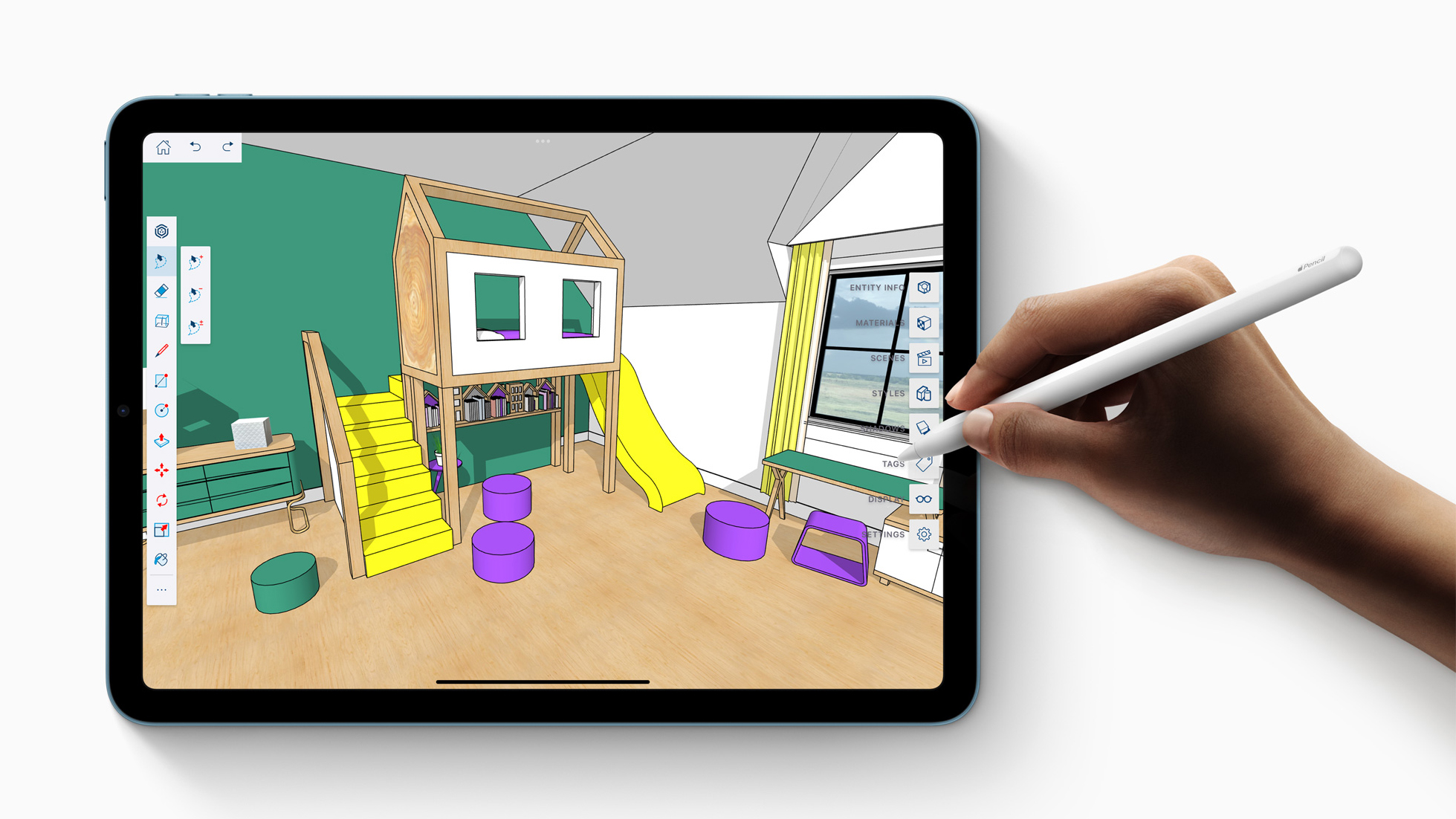
Last but not least, Apple also unveiled an update to the iPad Air.
As opposed to the well-received 2020 version, the latest iteration of the lightweight tablet is powered by Apple’s powerful M1 chip and also features 5G capability and an ultra-wide front camera.
Pescatore told IT Pro that the new iPad Air is a much-needed refresh for the tablet. The additional new features bring the iPad Air “in line with other products in the portfolio”, he said, as the “move to remote work and virtualised operations has opened up new opportunities for more powerful hardware and software”.
This is a “successful strategy that continues to deliver and drive revenues,” he added.
Just like the iPhone SE, the new iPad Air will be available for pre-orders on 11 March, with prices starting at $599 (£455) for the standard Wi-Fi model and $749 (£569) for the Wi-Fi + Cellular model.
Having only graduated from City University in 2019, Sabina has already demonstrated her abilities as a keen writer and effective journalist. Currently a content writer for Drapers, Sabina spent a number of years writing for ITPro, specialising in networking and telecommunications, as well as charting the efforts of technology companies to improve their inclusion and diversity strategies, a topic close to her heart.
Sabina has also held a number of editorial roles at Harper's Bazaar, Cube Collective, and HighClouds.
-
 Third time lucky? Microsoft finally begins roll-out of controversial Recall feature
Third time lucky? Microsoft finally begins roll-out of controversial Recall featureNews The Windows Recall feature has been plagued by setbacks and backlash from security professionals
By Emma Woollacott Published
-
 The UK government wants quantum technology out of the lab and in the hands of enterprises
The UK government wants quantum technology out of the lab and in the hands of enterprisesNews The UK government has unveiled plans to invest £121 million in quantum computing projects in an effort to drive real-world applications and adoption rates.
By Emma Woollacott Published
-
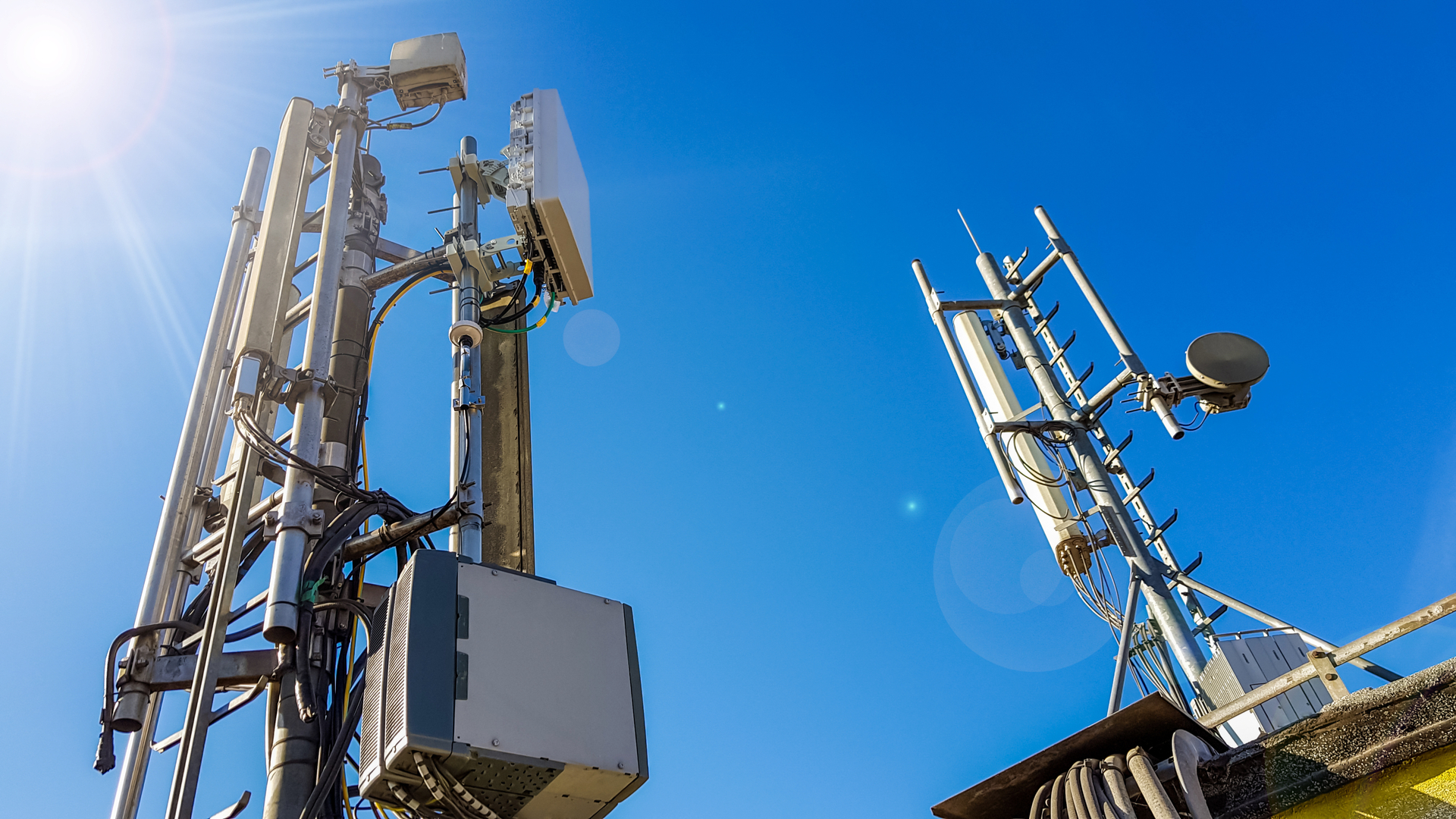 Samsung and Marvell develop low-power SoC to support 5G
Samsung and Marvell develop low-power SoC to support 5GNews The chip is scheduled to arrive in Q2 2021
By Praharsha Anand Published
-
 Apple plots €1 billion Munich lab for 5G chip production
Apple plots €1 billion Munich lab for 5G chip productionNews The company will use the Silicon Design Centre to explore the "new frontiers of 5G technology"
By Zach Marzouk Published